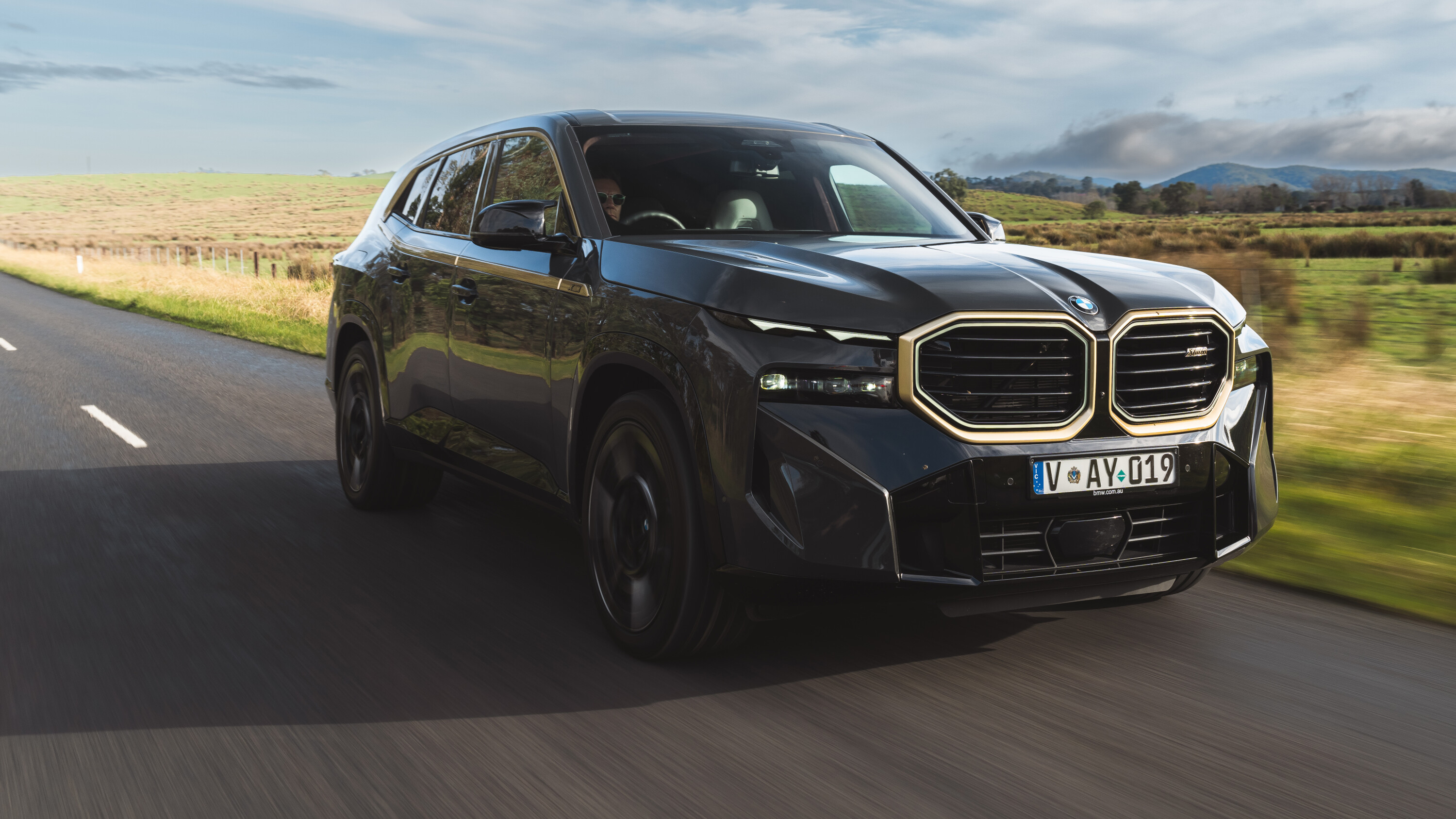Score breakdown
Things we like
- Beautifully made and luxurious cabin
- Hybrid powertrain has plenty of grunt
- Brave design makes a statement
Not so much
- Brittle ride
- Lacks the comfort and refinement to be properly premium
- Other super SUVs are better to drive, like an X5M…
Should we be surprised that the long-awaited successor to the elegant and iconic BMW M1 supercar of the 1970s is a gigantic and obscenely powerful SUV? Not really.
Love them or hate them, SUVs are what people are buying in 2023, so who can blame BMW for wanting a bigger slice of the ‘super SUV’ pie?
It’s clearly a lucrative segment and one bursting with other eye-catching rivals like the Lamborghini Urus, Aston Martin DBX, Porsche Cayenne, Mercedes-Benz G-Class and the Bentley Bentayga.
No, what’s surprising about the BMW XM is that it’s not terribly convincing…
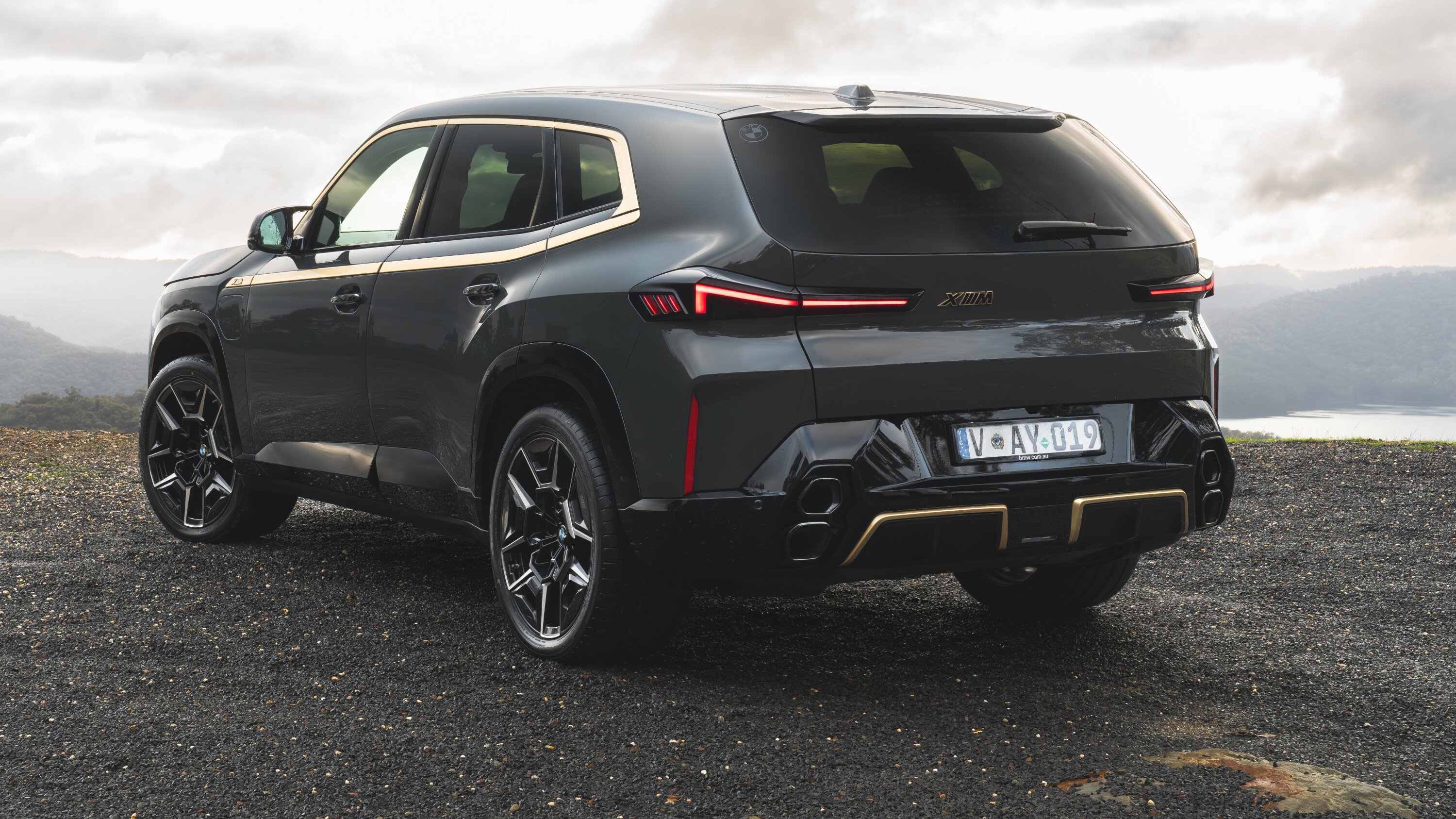
BMW M is on a roll at the moment. The new M2 is brilliant, the M5 CS is a future classic, and the M3 and M5 Tourings are quickly shouldering Audi out of the way to become the best all-weather, everyday performance cars on sale.
But the XM? It’s a rare swing and a miss from BMW’s lauded motorsport division which, given it’s only the second ever dedicated M model, is a real shock.
So where does it fall short? And are those weaknesses enough to stop us recommending the XM over its hoard of high-performance rivals? Read on…
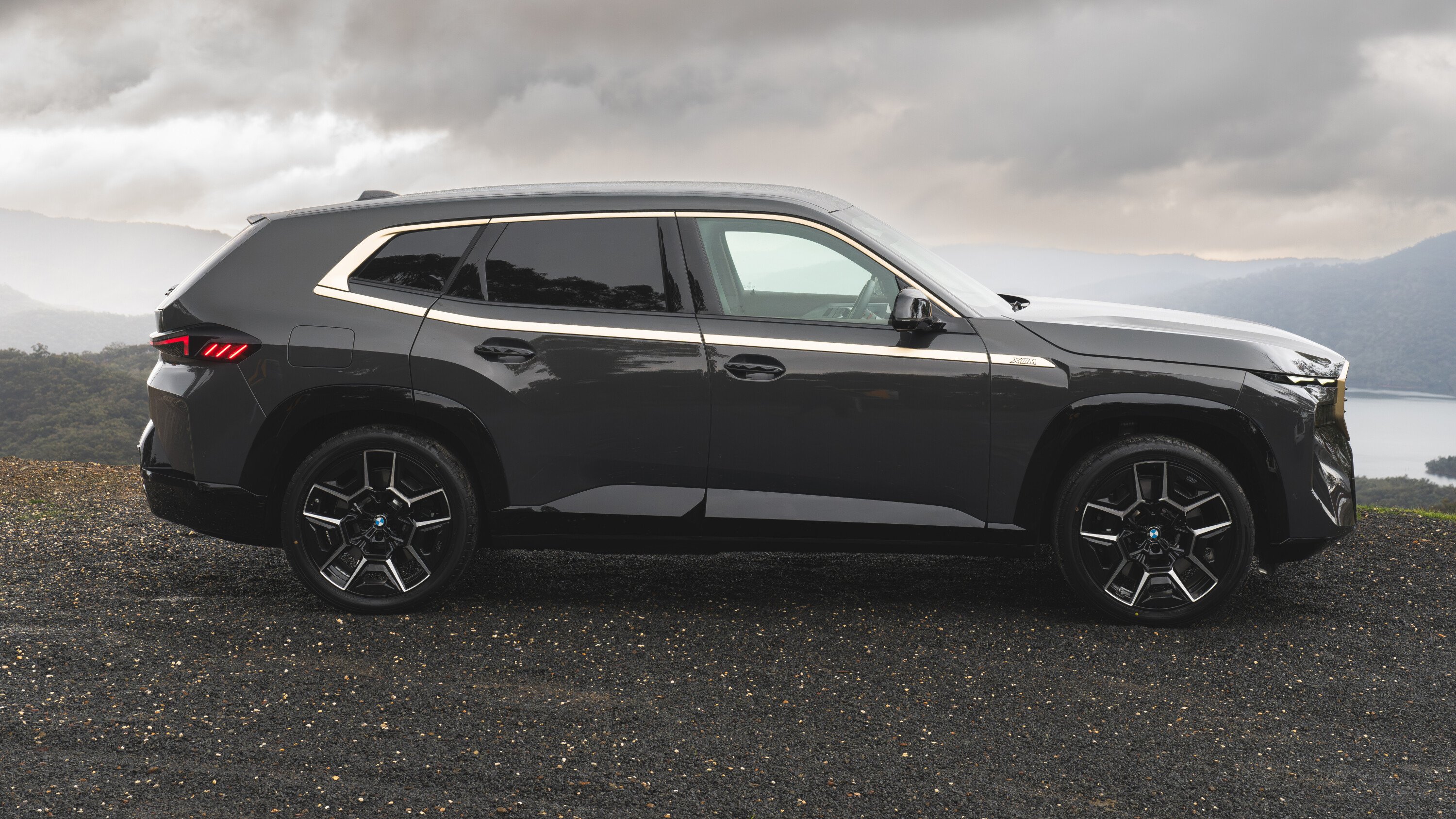
JUMP AHEAD
- How much is it and what do you get?
- How do rivals compare on value?
- What’s it like to drive?
- Interior comfort, space and storage
- How much fuel does the BMW XM use?
- How safe is the BMW XM?
- VERDICT
- Specifications
How much is it and what do you get?
The 2023 BMW XM is the most expensive BMW you can buy. It costs $302,200 before on-roads, making it $74,300 and $68,300 more expensive than BMW’s existing super SUVs, the X5M and X6M Competitions.
The good news is that the XM’s price is all inclusive. Want to upgrade the standard, and already enormous, 22-inch alloys to gold-accented 23s? No problem, sir.
Keen to decorate the interior in slathers of soft ‘BMW Individual leather’, or perhaps you’d like to paint the huge brake callipers red? No additional charges required. Five years of free servicing is also included.
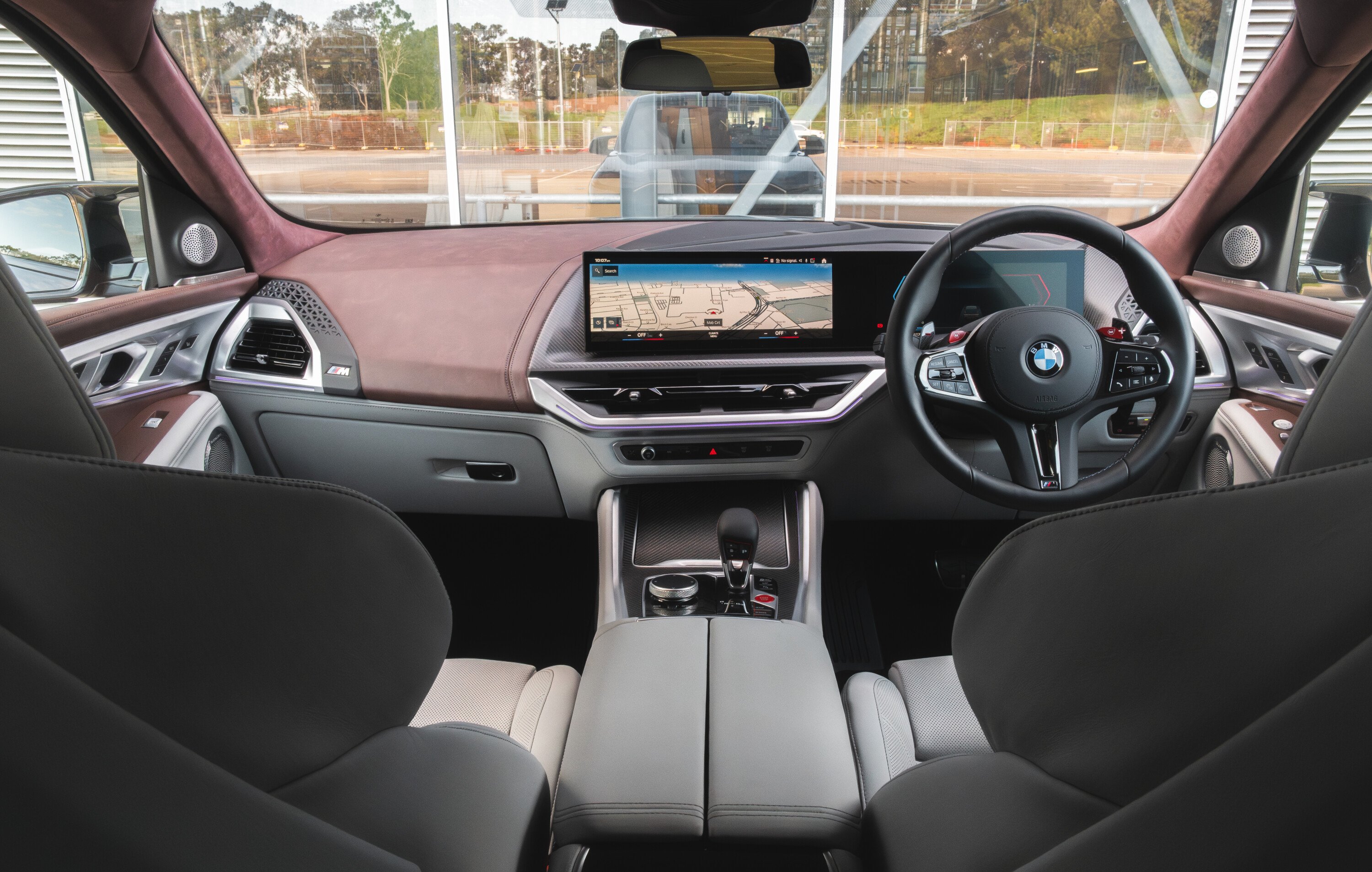
Aussie cars also score the ‘night gold’ exterior trim and ‘vintage brown’ leather option for the dash and doors as standard fare, meaning our XMs are some of the most highly specified in the world.
And as you’d hope for such a hefty outlay, the XM is suitably powerful. Nestled behind that huge, gold-lined nose is BMW’s fresh S68 4.4-litre ‘hot vee’ twin-turbo V8, producing an unstressed 360kW and 650Nm.
Those figures are boosted by BMW M’s first ever plug-in hybrid system which combines an e-motor inside the ZF eight-speed auto with a 25.7kWh battery to take total outputs to 480kW/800Nm. Meaty.
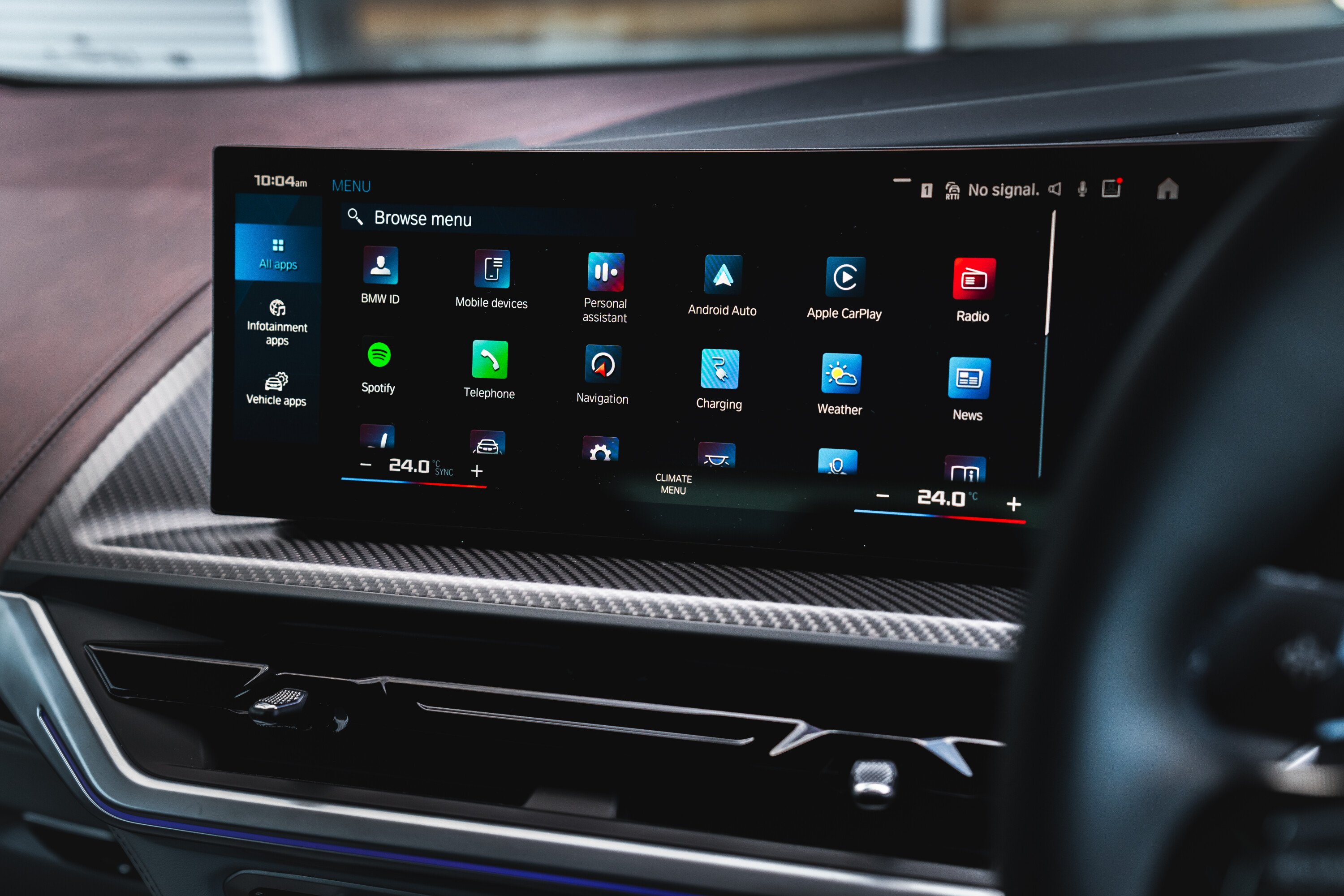
Acceleration from 0-100km/h is brisk at 4.3 seconds– no mean feat given the XM weighs a mighty 2710kg – and as the XM is a plug-in hybrid, it’s also capable of coasting along in total silence for a WLTP rated 88km.
Top speed is 270km/h and the official combined economy figure, providing you keep the XM’s battery topped up, is an impressive 2.7L/100km. The battery can only accept an AC charge rate of 7.4kWh, however, topping up the battery isn’t a quick process at 4.5 hours.
Want your XM to be even more powerful? BMW will soon offer a ‘Label Red’ version of the XM that, for an additional $46,000, produces 550kW/800Nm and cuts the 0-100 sprint to 3.8 seconds. Australia has scored 30 examples of the limited-run ‘Label Red Edition’, each carrying a sticker price of $349,900
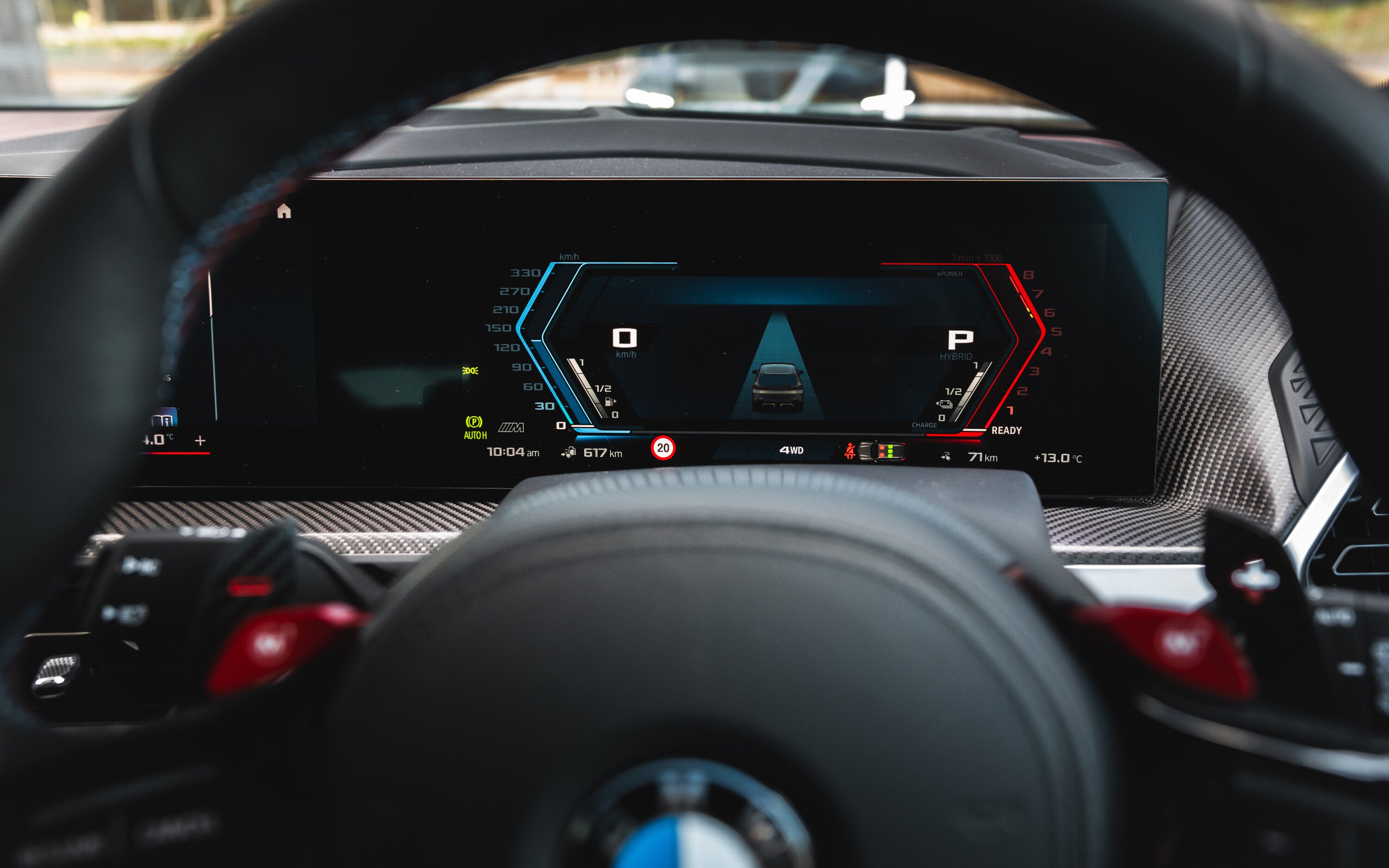
What you’re really buying with the XM, of course, is a statement piece. Its design is deliberately incendiary – “The intent,” says BMW M’s boss, Frank van Meel, “was to make the whole car quite eye catching.
We wanted to have a provocative car… something that stands out from all the others” – and while driving dynamics were clearly a priority, it’s obvious that wowing customers with the XM’s lounge-like rear seat, bolshy exterior detailing and architectural, prism-like roof lining were top objectives.
One thing you don’t get with your XM is active aero dynamics. Or carbon ceramic brakes, even on the hardcore Label Red version.
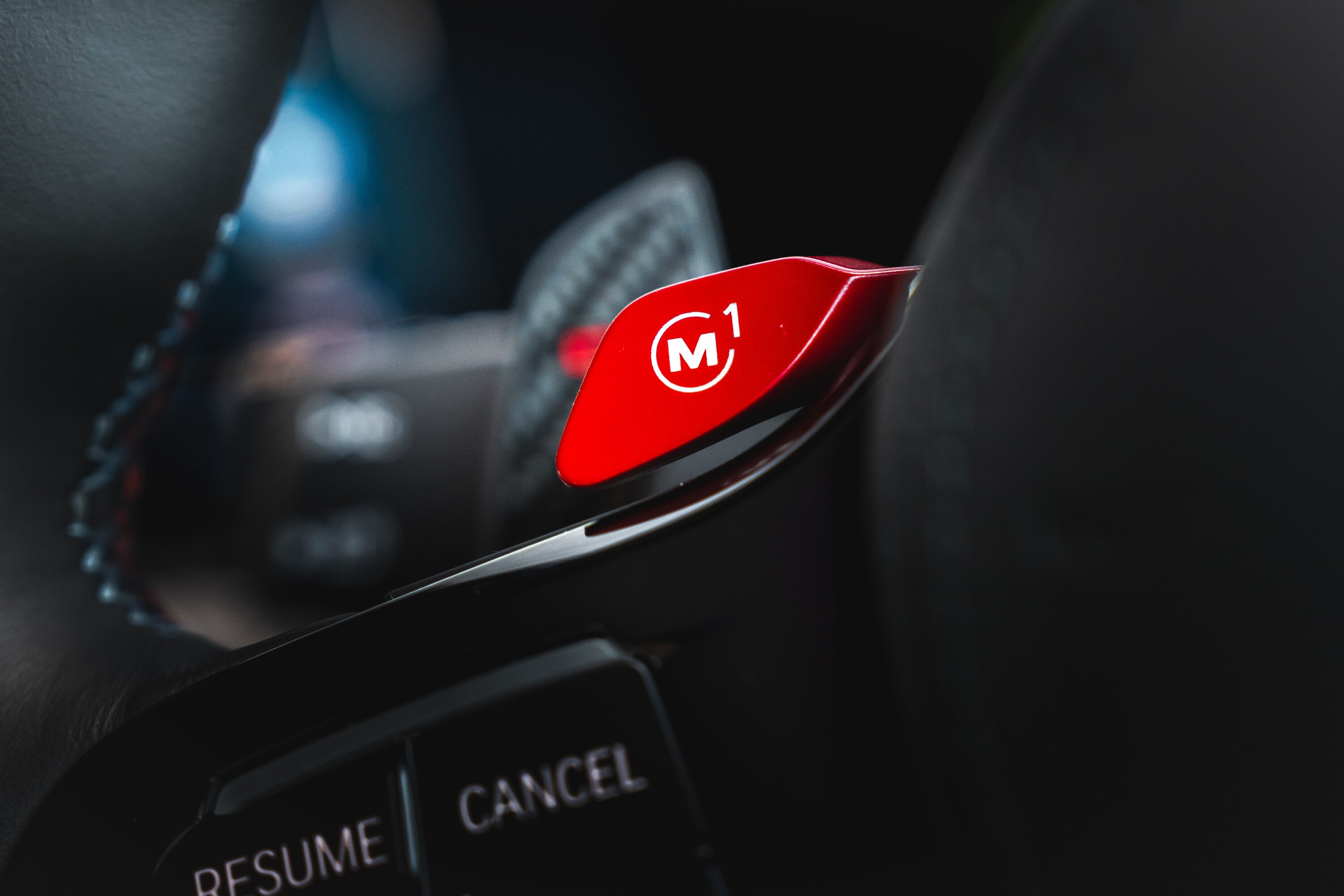
Or a dedicated platform… The XM is built on a Frankensteined version of BMW’s existing CLAR architecture and uses the X5M’s rear differential and suspension. The high voltage battery is also nicked from the X5 plug-in hybrid.
All of the exterior body panels are new, however, (only the mirror caps are carried over from X5) and the floor pan is heavily modified to accomodate the stretched 3105mm wheelbase. At 5.1 metres long and more than two metres wide, this is a vast SUV.
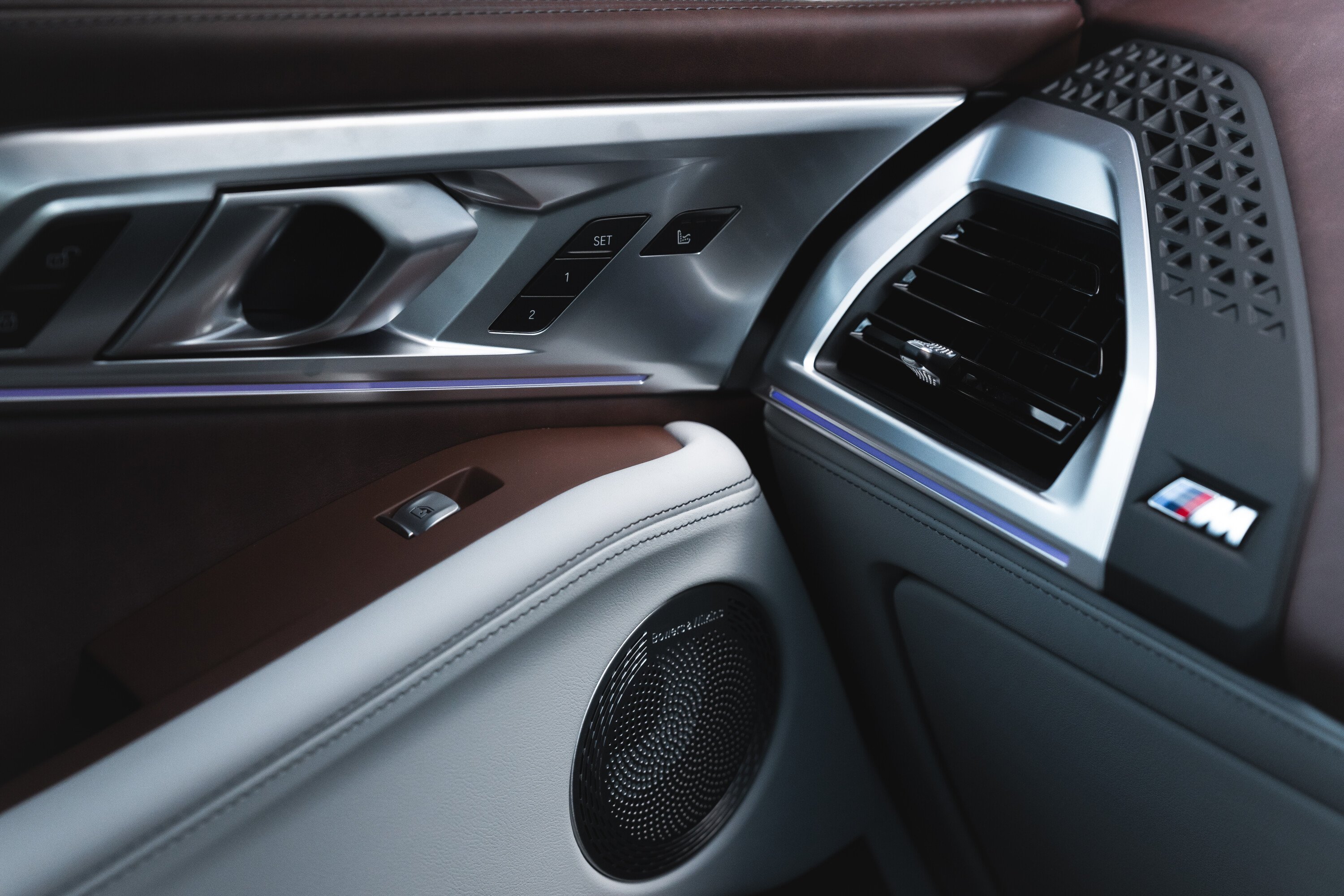
How do rivals compare on value?
Depending on your perspective, the XM is either great value or ferociously overpriced. M’s boss, Frank van Meel, says the XM is pitched as a rival for the Lamborghini Urus, Bentley Bentayga and Mercedes-Ben G-Class and against those rivals, the XM measures up a well.
An Urus, for example, is more than $100K costlier at $409,744 and the Bentley is similarly rich thanks to an asking price of $378,600. The Aston Martin DBX is another obvious rival and again, the BMW is cheaper, with the Aston costing $365,512 for the ‘regular’ version and $428,400 for the hardcore 707 variant.
BMW also rightly points out that the XM is the only competitor in the Super SUV segment to offer a plug-in hybrid powertrain.
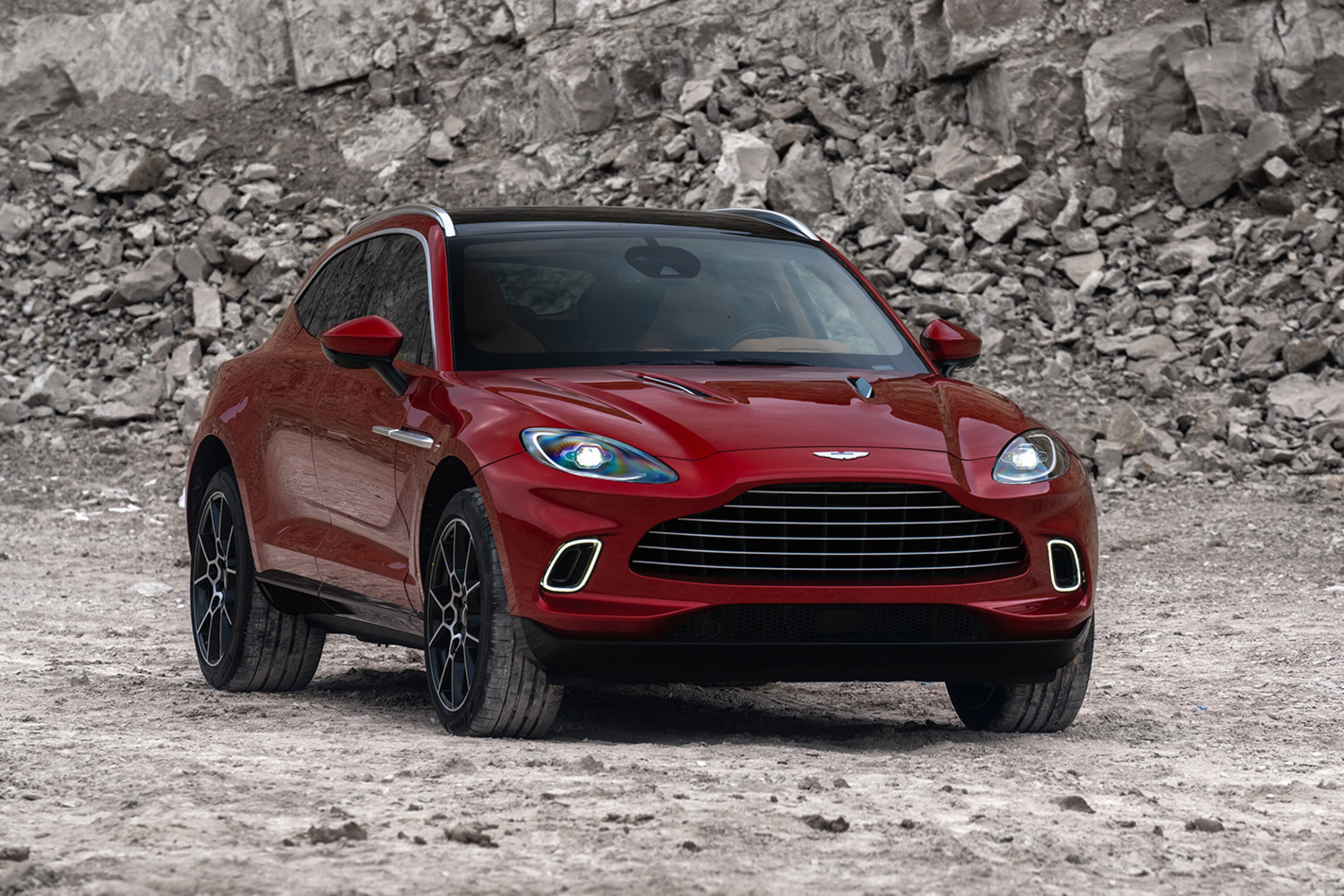
Compare the XM against other established performance SUVs, however, and its value equation changes dramatically.
We’ve already mentioned the price disparity to the X5M and X6M Competitions, which are $74K and $68K, less expensive, but there’s also the Audi RS Q8 (80K cheaper) and the Mercedes-AMG GLE 63 S which is $60K better off.
And don’t think this group of more affordable rivals are in anyway less potent. Just like the XM, all are similarly armed with high-tech chassis systems like adaptive dampers and electronic sway bars, and all of these rivals boast sub 4.0sec 0-100km/h times.
So they aren’t only cheaper and equally adept at going around corners, but they’re quicker than the XM, too…
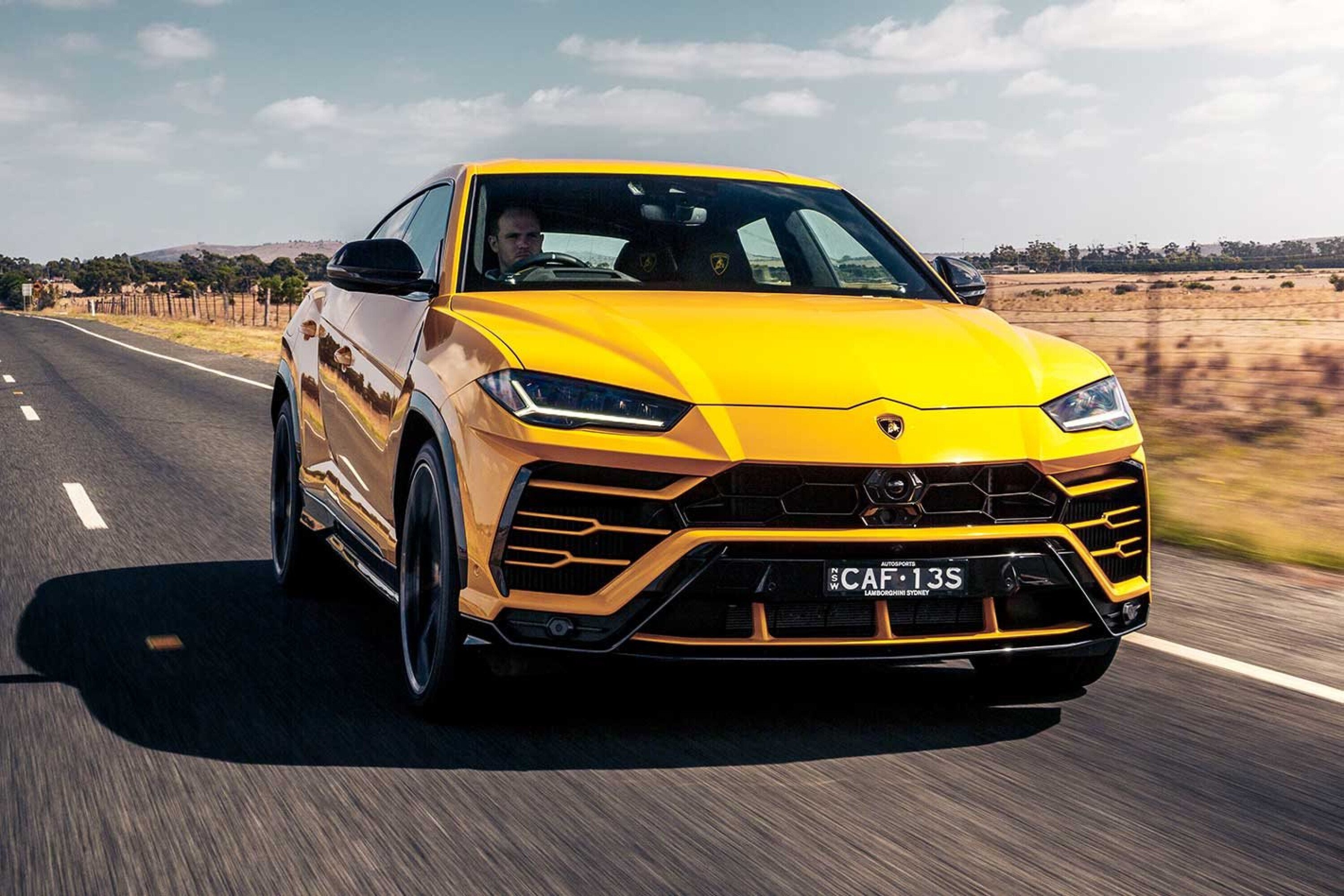
What’s it like to drive?
Grab the patterned door handle (each has a raised geometric pattern), nestle into the deeply cushioned driver’s seat and the first impression the XM provides is one of sheer size.
The long bonnet stretches out before you and because the seating position is impressively low – much lower than an X5M’s – you feel heavily ensconced inside the XM’s massive proportions.
Things are less intimidating when you push the starter button. Fire the XM into life and there’s no snarling V8 soundtrack to match the monstrous exterior. Instead, you sneak forward in utter silence, the e-motor propelling you silkily and stealthily.
It’s a cool party trick – there are three settings for the hybrid system: Hybrid, Electric or eControl – and the handover between petrol and electric power was smooth during our short stint behind the wheel.
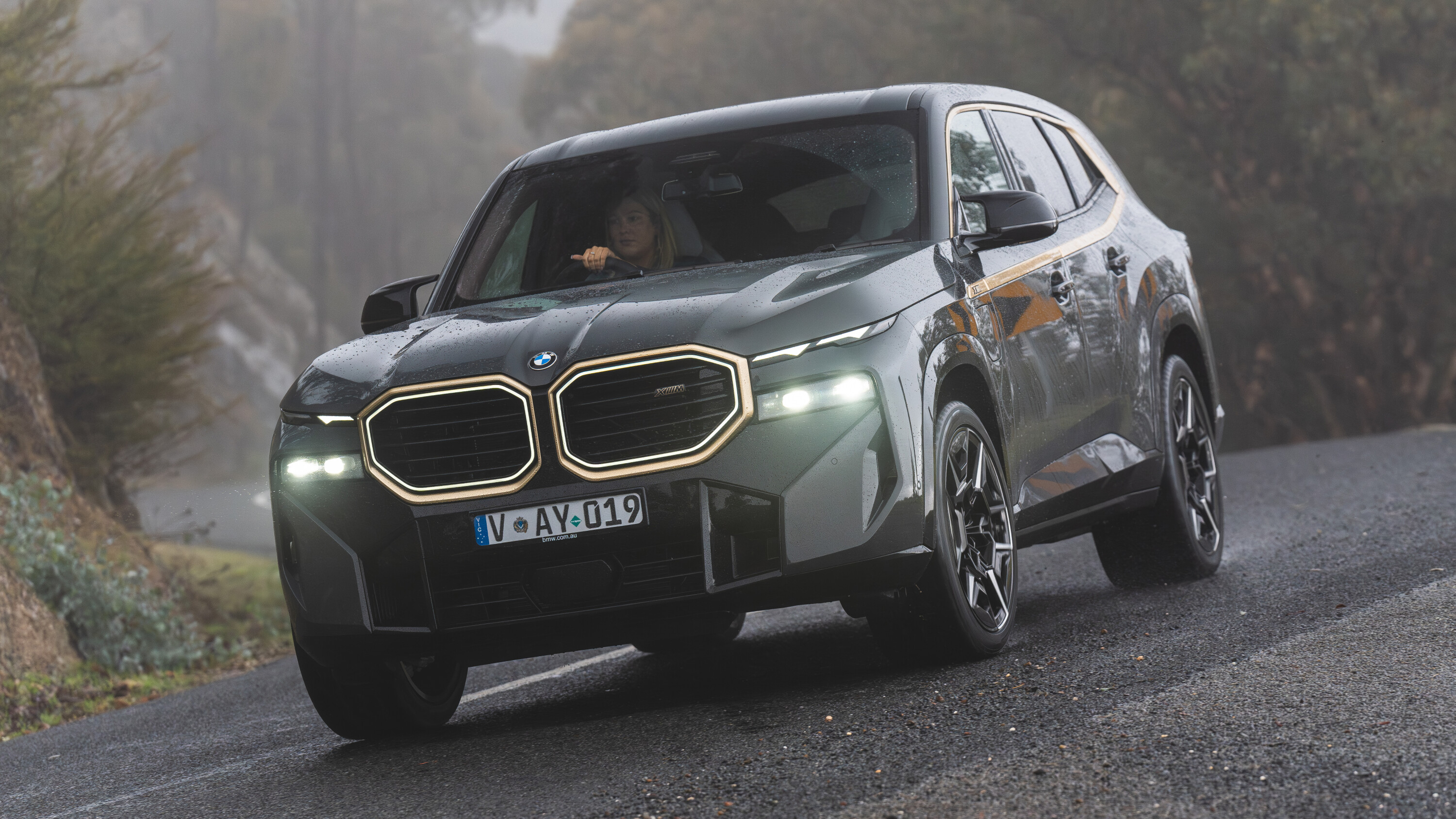
The brake pedal also sidesteps the corruption or ‘fuzzy’ feeling at the top of the travel that you can sometimes plague hybrids. Nice.
The next thing you notice is the ride. And initial impressions aren’t positive… Our test car was rolling on the standard 22-inch ‘light alloys’ and at low speed they thump and shudder, with the impacts over potholes and expansions joints harsh enough to make you wince.
It’s certainly not the kind of pillowy, wafty ride you might expect from a luxury SUV, even with the adaptive dampers set to their softest Comfort setting. Things improve a little as you get more speed under the tyres but even then the ride on steel springs is fidgety, the big alloys niggling over small bumps and the huge tyres sniffing out and chasing the camber of the road.

Tyre noise is another annoying companion, with the constant background roar of rubber on road further eroding the sense of luxury.
The XM’s size is even more apparent at speed, too, and it takes a while before you feel confident to position it accurately on a windy road.
Okay, time to try the V8. It’s a big deal this 4.4L V8/hybrid combo. It’s almost guaranteed to power the next M5 and it will soon find its way into a host of other M models, like the next X5M and X6M. And as you’d expect, it’s a ferocious power plant.
Smooth and muscular, the big V8 doesn’t only sound fantastic (the XM’s quad exhausts are stacked on top of each other, in another M first), but the way it uses the instant response of the hybrid system to fill any torque gaps and deliver unrelenting acceleration is deeply additive.
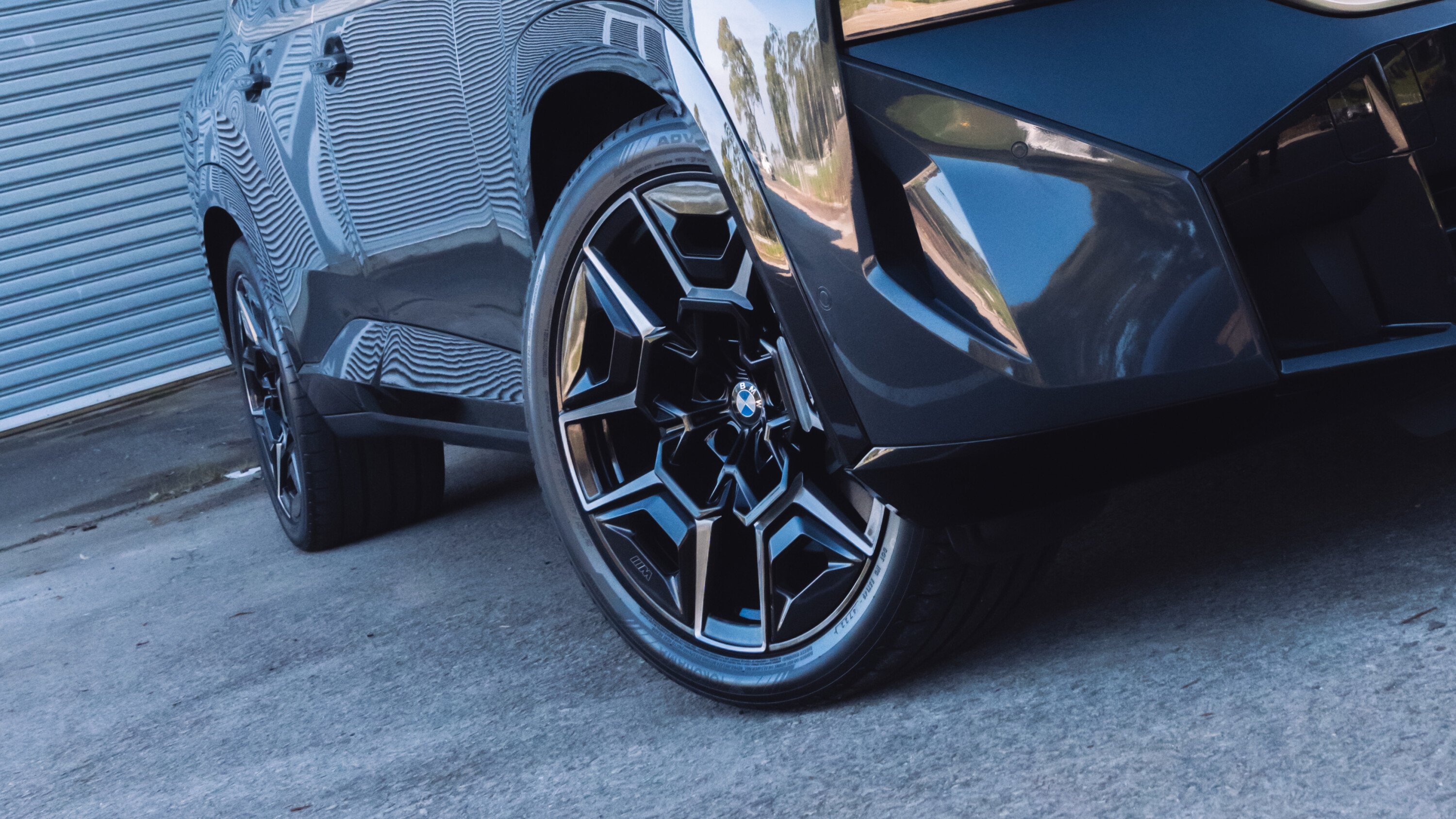
There’s talent to the chassis, as well. Dial the XM into its most aggressive setting (there are modes for the gearbox, dampers, steering, regen, brake pedal feel, hybrid system and the exhaust), and it’s obvious this is an astonishingly fast SUV.
Grip is the overarching trait. Pitch it into a corner and it’s incredible how aggressively it turns and how much adhesion you have at your disposal. Only distant tyre squealing gives you an idea of the forces you’re subjecting the car to.
You can even play with the balance a little once the XM is set into a corner and traction and drive is blistering as you rocket out of bends. The stopping power and fade resistance of the enormous steel brakes (front discs are 420mm clamped by six-piston callipers) is impressive too.

But it’s a driving experience that’s more impressive than it is properly engaging…
That’s partly down to the sheer number of chassis systems and electronics BMW has thrown at the XM to make it corner. Four-wheel steering, adaptive damping and active roll stabilisation are all present, and while the systems do result in a super SUV that can corner at terrifying speeds (an Audi RSQ8 performs the same trick) they also add a layer of remoteness that doesn’t feel very ‘M’.
Plus, most ‘super SUVs’ tend to shrink around you as speed and confidence build. The XM doesn’t. It always feels enormous.
So M’s first halo car in 45 years is a bit of a mixed bag to drive. While it’s fast and grippy, it’s too unyielding and brittle to feel like a proper luxury SUV. And it’s not engaging or playful enough to be an enjoyable driver’s SUV either. Hm, wasn’t expecting that.
If any of the terms in this section have left you scratching your head, these articles will help bring you up to speed!
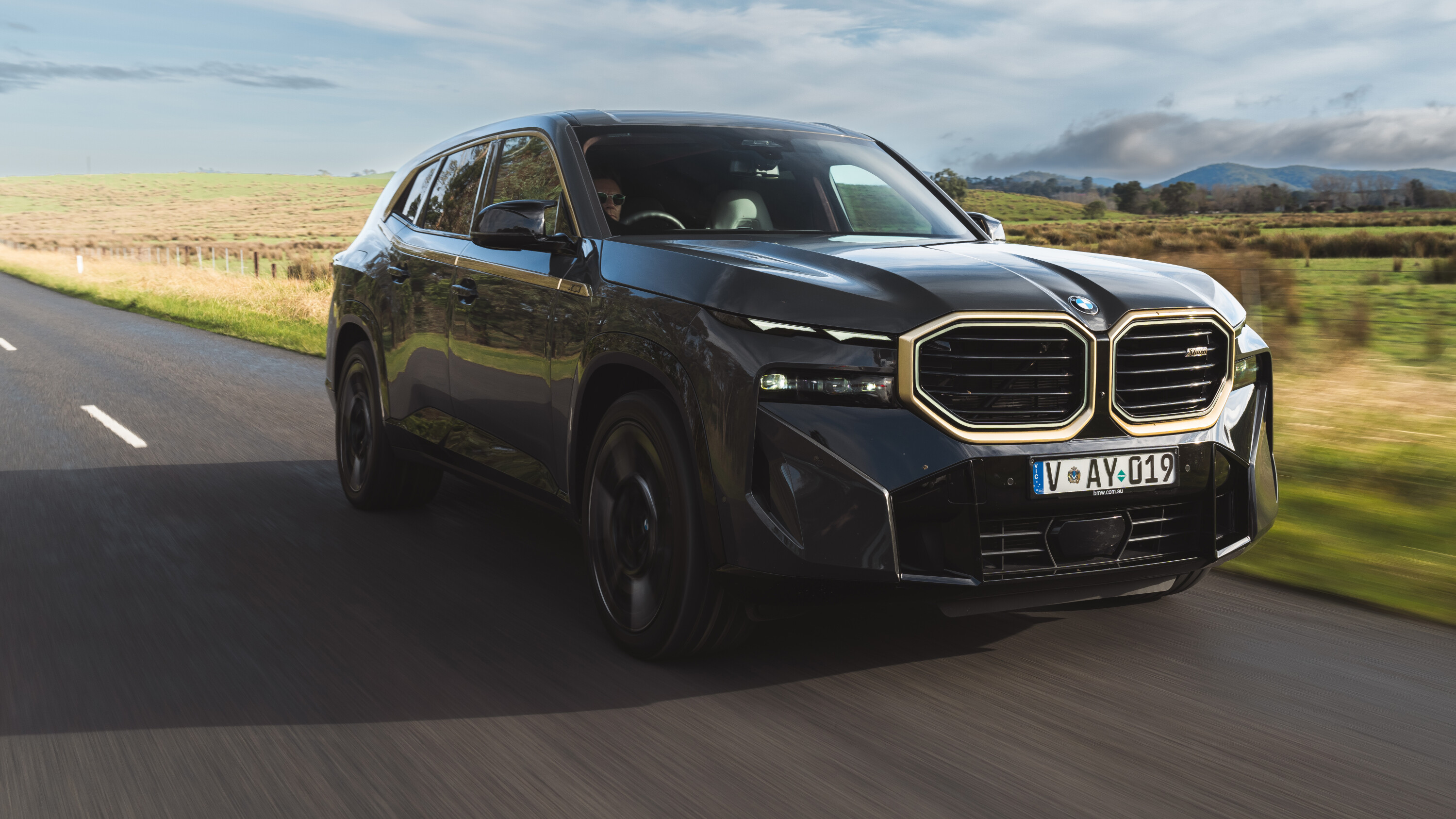
- What is a Powertrain or Drivetrain?
- Power vs torque
- Car suspension explained
- Automatic transmissions (‘gearboxes’) explained
- Chassis control systems explained
- Car vs Ute vs SUV: How the vehicle you buy should guide the way you drive
Slow things down a touch and the XM is more convincing. The cabin really is lovely.
The windscreen displays and functionality of the infotainment is identical to other M cars, meaning the sheer depth of the menu structure can take some getting used to, but after a familiarity period, the iDrive system is excellent. Fast and with clear graphics, the twin curved displays are also hard to fault. As is the mix of materials in the XM.
The seats are soft, supple and superbly comfortable (they’re cooled/heated and offer an excellent massage function) and all of the plastics and leather uses in the cabin are high quality. The ‘worn’ brown leather on the dash and doors works well, too, and adds an additional layer of texture to what would otherwise be big expanses of brown.
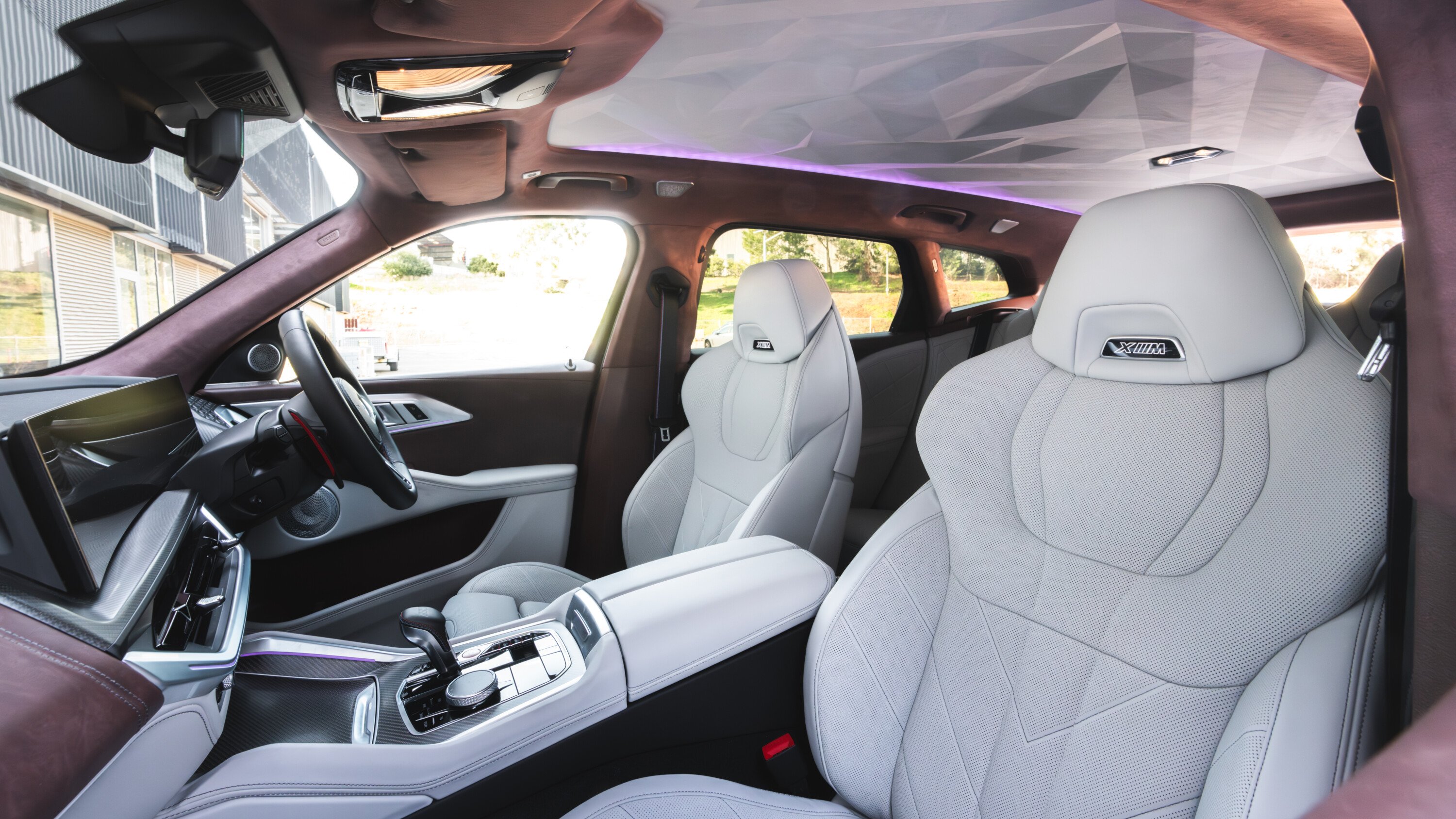
The Bowers & Wilkins sound system is also mighty impressive and we loved the tactility of the carbon shift paddles.
Storage is another highlight. The door pockets are massive, there’s a big lidded cubby ahead of the leather-clad shifter, the twin central cupholders are heated/cooled, and the centre storage bin between the two fronts seats is also on the large side.
The back seat is equally premium and practical. Tall passengers have ample room (knee room is especially generous), the outboard seats are comfortable and cosseting and there’s additional padding on the side of the door cards (similar to what you get in a BMW iX) which gives the rear seat a comfy ‘wrap around’ feeling.
There are even XM branded pillows that can be stored in the wide door pockets. Rear passengers aren’t short of USB-C charging outlets either.
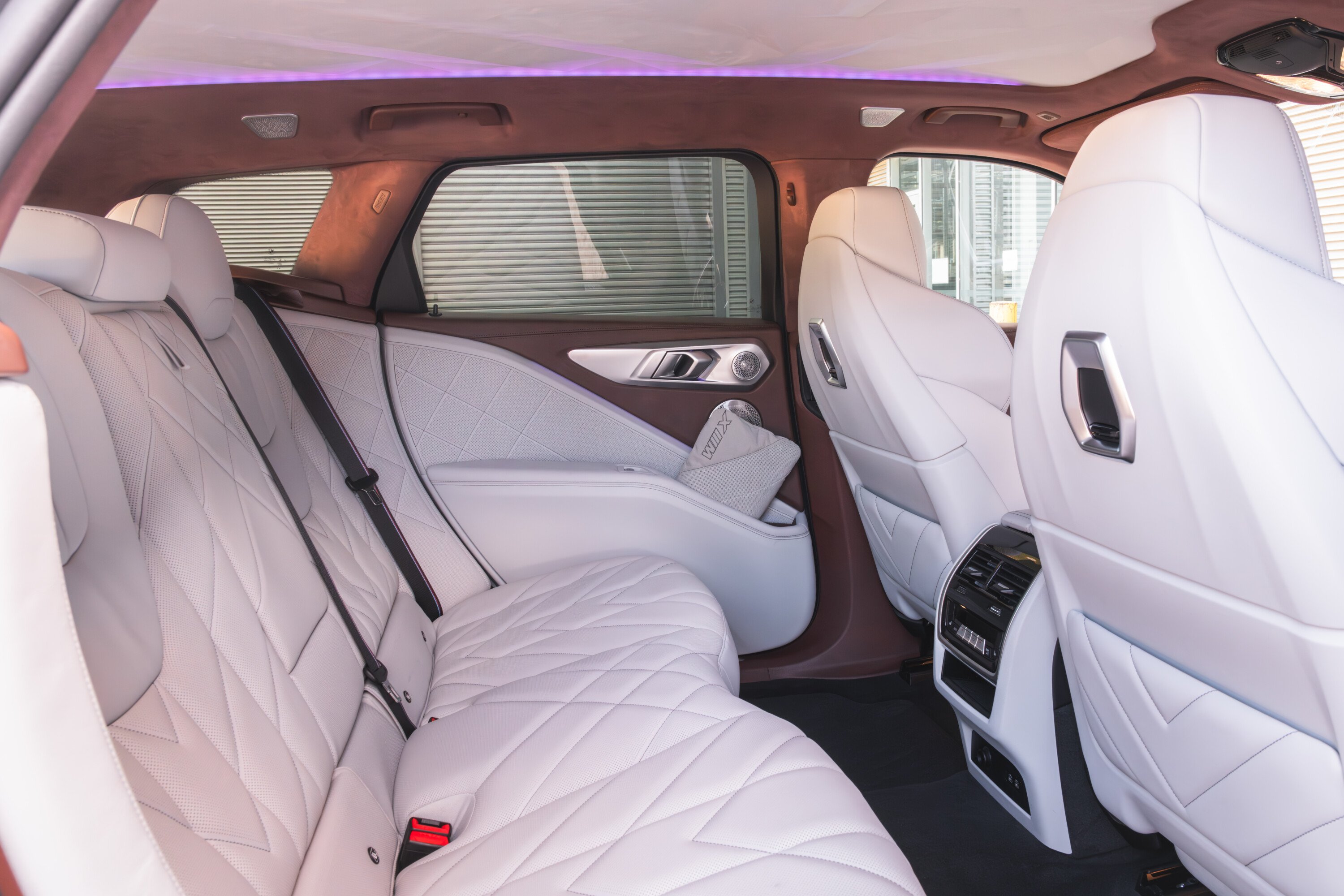
There are two on the back of the centre console (which also houses individual temp control for the four-zone climate) and two others in the rear of each front seat designed to hold tablets.
The boot is roomy at 527 litres, or 1820L with the rear seats folded, and an electric tailgate is standard. But there are no bag hooks and the boot floor is fixed so there’s no space for a spare tyre or anywhere to put the chunky AC charging cord. BMW’s solution for the latter is to stuff it inside a high quality duffle bag but that takes up boot space.
One thing that might divide opinion is the geometric roof lining. While it’s indisputably a talking point and a sure way to impress passengers, we couldn’t help but wondering if a glass panoramic roof would feel just as special and lend the cabin an airier feel.
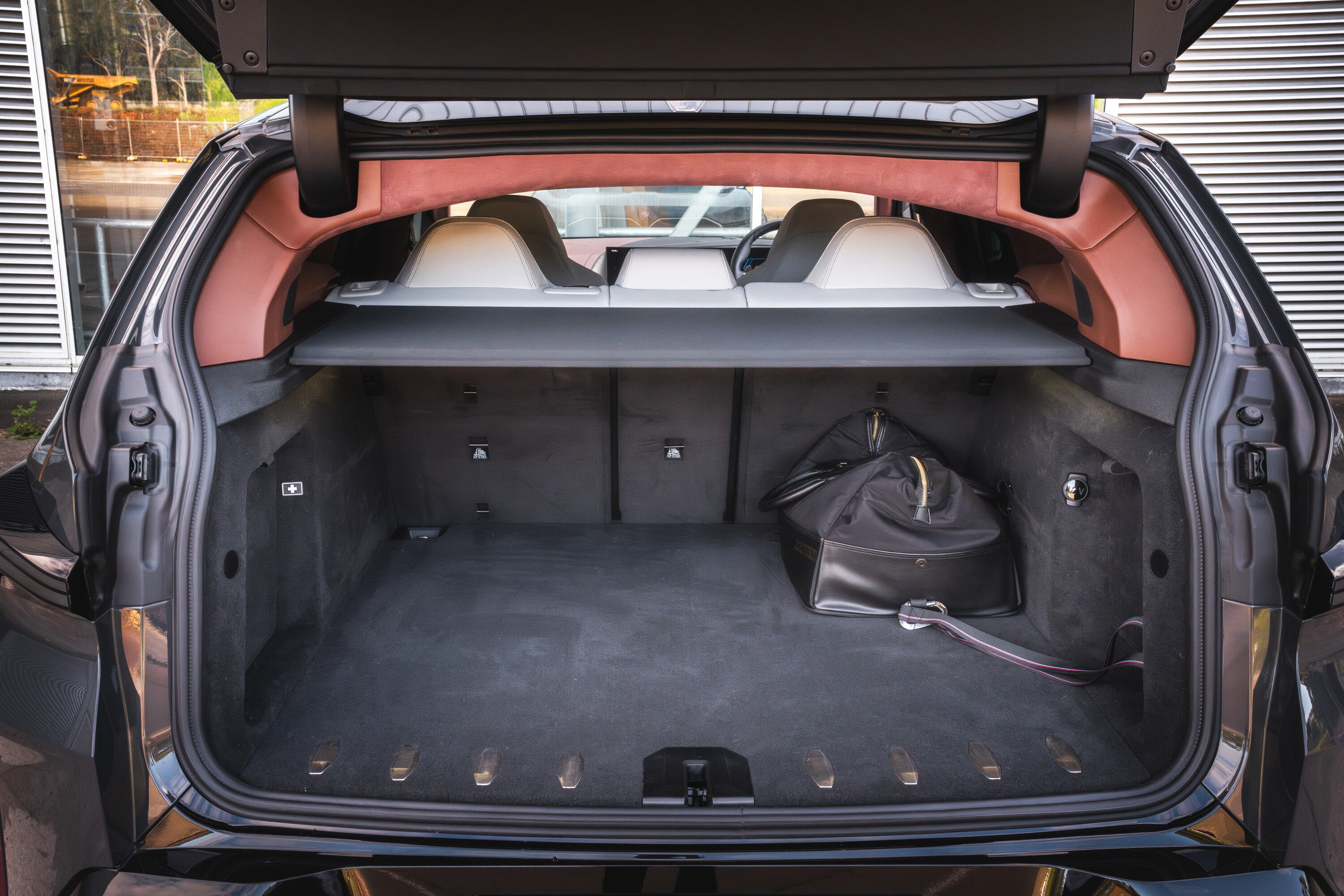
How much fuel does the BMW XM use?
Officially, the BMW XM uses 2.7L/100km on the combined cycle.
How close you get to that number will depend entirely on how you drive the XM and, more importantly, how often you plug it in.
We drove the XM on a mix of urban and country roads with a battery than was almost flat and saw an average fuel figure of 9.5L/100km. We’d wager that in everyday driving around 7.0L is achievable. The XM is fitted with a 69L fuel tank and accepts 91 RON.
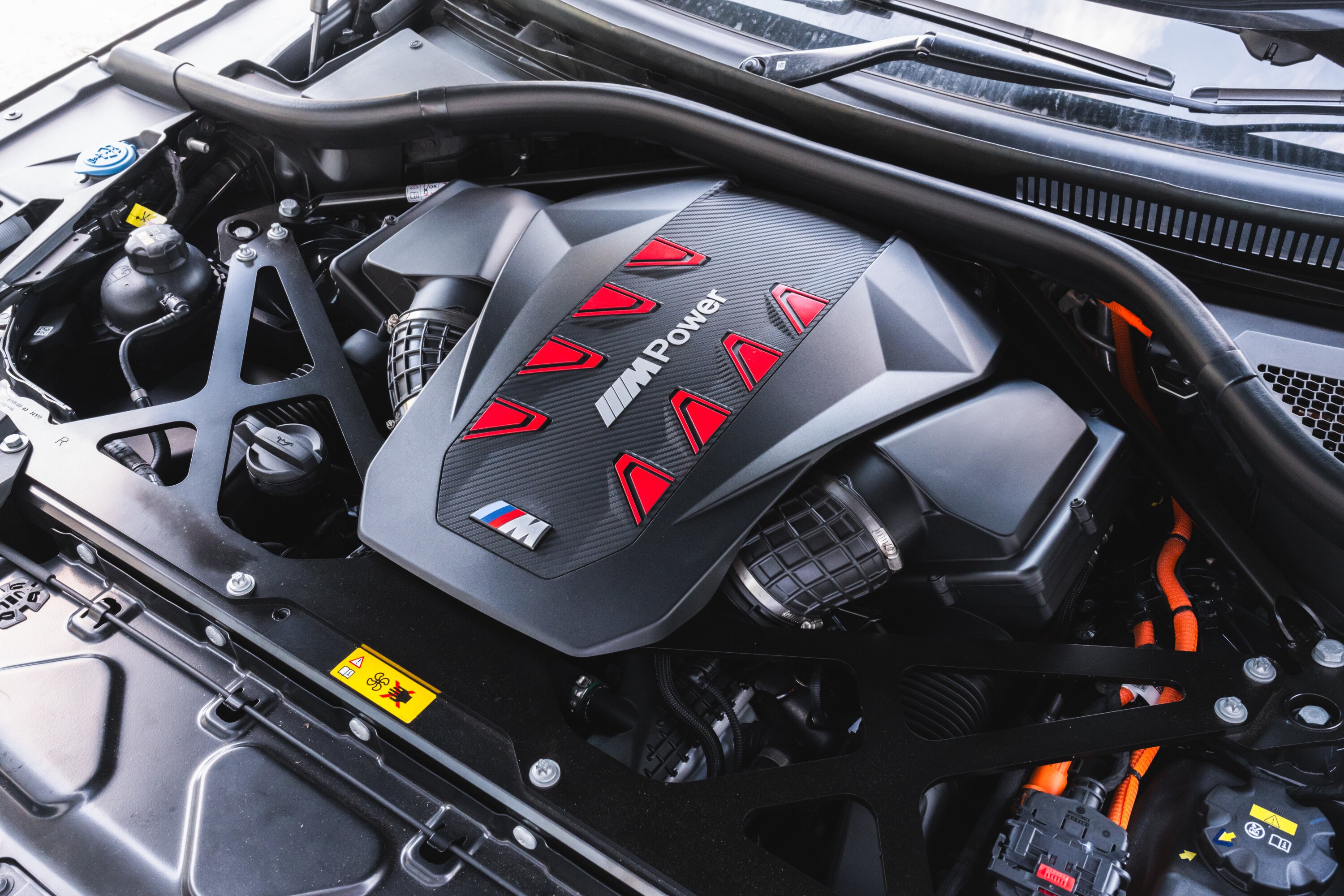
How safe is the BMW XM?
Unsurprisingly for such an expensive and low volume model, the XM hasn’t been crash tested.
But while it doesn’t carry an official five star crash rating, it is bursting with BMW’s usual mix of active safety systems.
They include: active cruise control with stop & go, front and rear cross traffic alert, lane keep assist, side collision warning, six airbags, a tyre pressure monitor system and a 360 surround view camera.

VERDICT
You have to admire the ambition of the BMW XM. It’s not only BMW’s most powerful and most expensive model ever, but it’s also M’s first plug-in hybrid and it thrusts Munich’s performance division into a new and lucrative segment.
The scope of its brave exterior design also deserves acknowledgement, even if it mightn’t be to your particular taste. And if judge the XM solely on its ability to make a statement, to provoke and to get tongues waggling, then it can be nothing but a roaring success.
But it’s execution where the XM falls short. In trying to be so many things – a statement piece, a luxury SUV and the flagship ultimate driving machine – it fails to nail any of them.
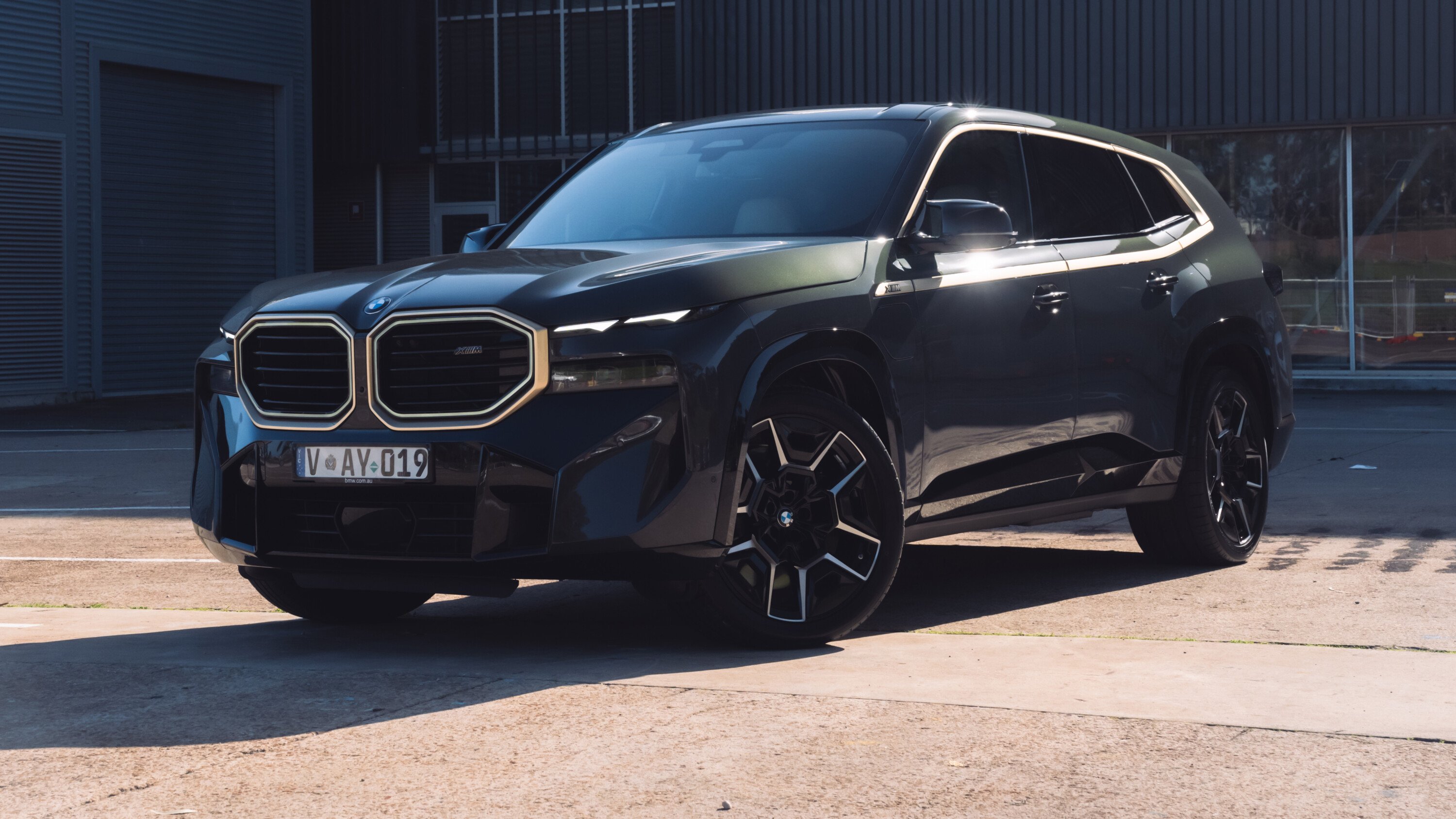
A BMW X5M Competition isn’t only cheaper, it’s better to drive. As are the Audi RS Q8 and Porsche Cayenne Turbo S e-Hybrid.
And because BMW has made the XM so stiff, there are a hoard of other luxury SUVs that are considerably more comfortable to travel in.
Does that make the XM a failure? No. On lots of levels it’s an admirable achievement – the hybrid powertrain is a highlight, as is the comfort and quality of the cabin – but we doubt the XM will go down as one of BMW’s great hits. At least if your measure of greatness is driving thrills.
| 2023 BMW XM specifications | |
|---|---|
| Engine | 4395cc V8, DOHC, 32v, twin-turbo + e-motor |
| Battery | 25.7kWh lithium-ion |
| Power @rpm | 480kW (combined) |
| Torque @rpm | 800Nm (combined) |
| Transmission | 8-speed automatic |
| 0-100km/h | 4.3sec (claimed) |
| Body | Five-door, five-seat SUV |
| L/W/H | 5110/2005/1755mm |
| Wheelbase | 3105mm |
| Boot space | 527L/1820L |
| Weight | 2710kg |
| Fuel / tank | 91RON/69L |
| Fuel use L/100km | 9.4L (combined) |
| Suspension | Double A-arms, coil springs, adaptive dampers, anti-roll bar (front) multi-links, coil springs, adaptive dampers, anti-roll bar (rear) |
| Steering | Electric rack-and-pinion |
| Brakes | 420mm ventilated steel discs with six-piston callipers (f); 398mm steel discs with single-piston calliper (r) |
| Wheels | 89.5J x 21 (f); 10.5 J x 21 (r) |
| Tyres | 275/45 R21 (f); 315/40 R21 (r) |
| Price | $302,200 before on-roads |
Score breakdown
Things we like
- Beautifully made and luxurious cabin
- Hybrid powertrain has plenty of grunt
- Brave design makes a statement
Not so much
- Brittle ride
- Lacks the comfort and refinement to be properly premium
- Other super SUVs are better to drive, like an X5M…
We recommend
-
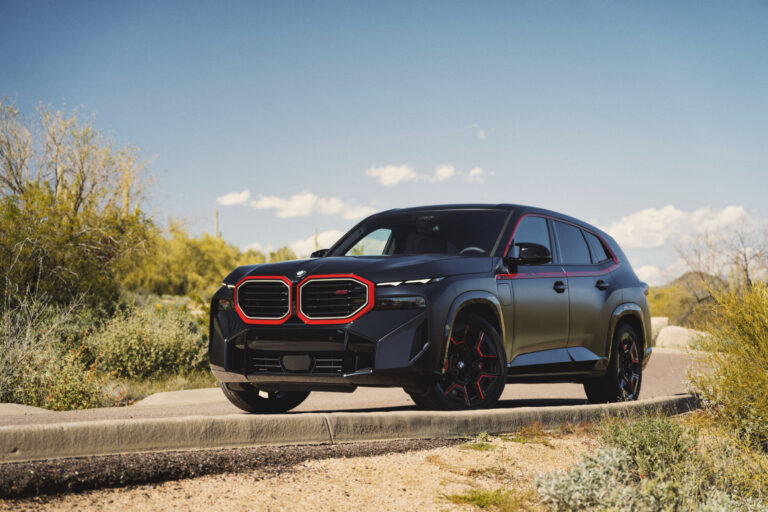 News
News2023 BMW XM pricing and features: Label Red details announced
BMW M Division's flagship XM finally breaks cover in production-ready guise
-
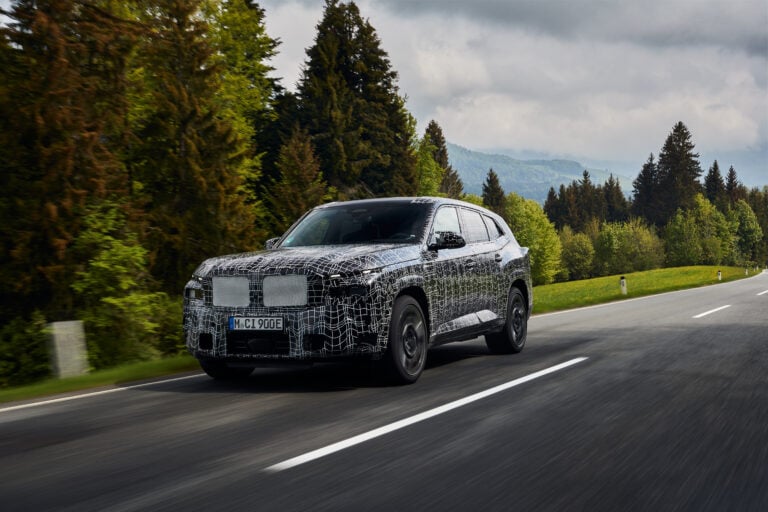 Reviews
Reviews2023 BMW XM 60 xDrive review: First pre-production drive
Can a 2.8-tonne plug-in hybrid SUV really live up to the Ultimate Driving Machine promise? We hit the road in a pre-production BMW XM to find out
-
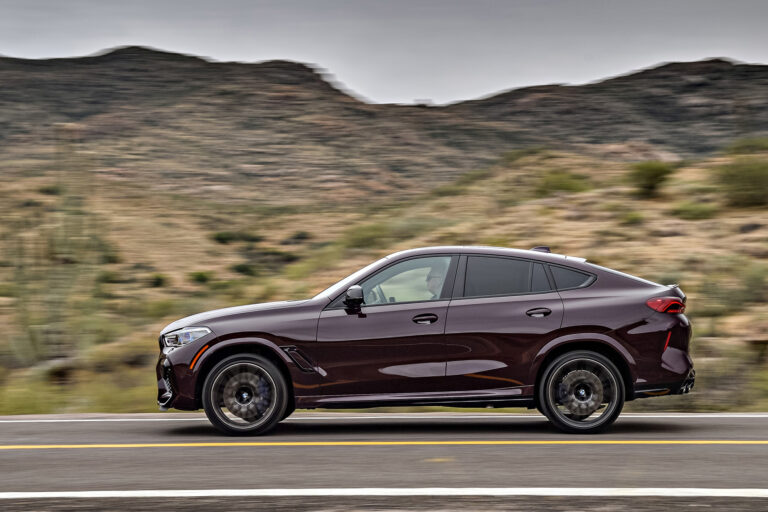 News
News2023 BMW X8 'still coming' – to sit below XM performance flagship
A fresh rumour out of Germany suggests a large coupe could join the BMW line-up


